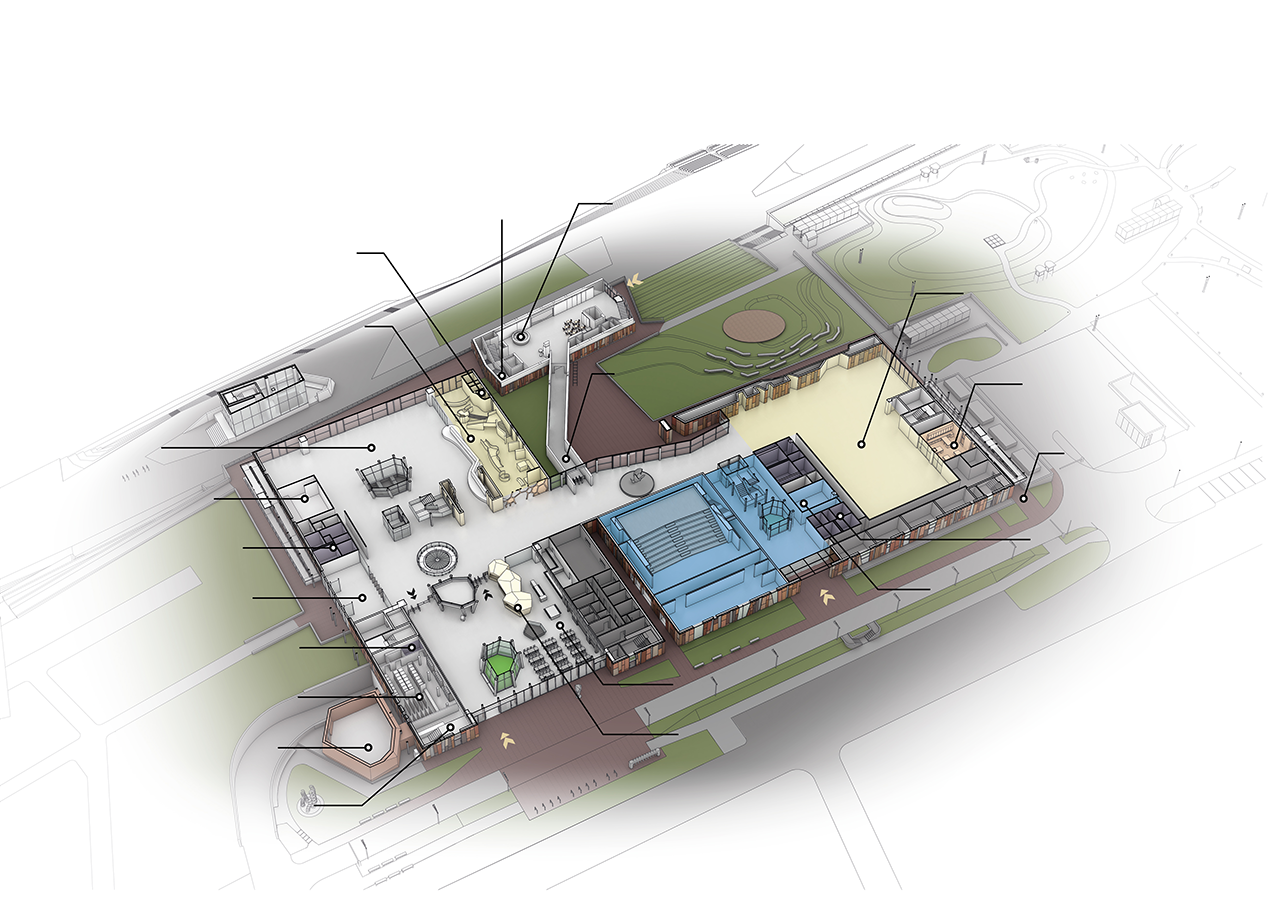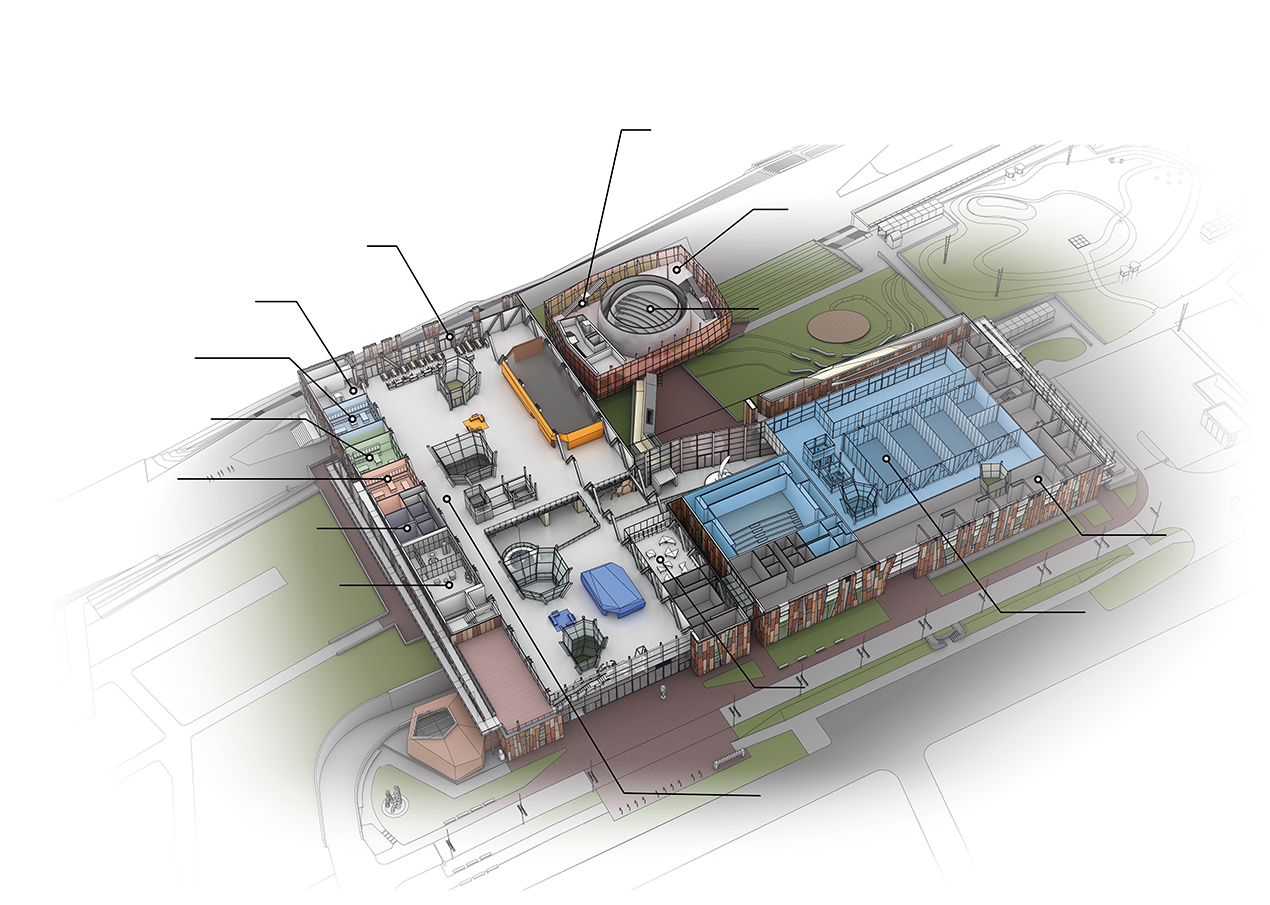To some, the Copernicus rooftop garden resembles a volcanic landscape, to others, an eroded terrain, or a Japanese rock garden. The footpaths meander around crater looking skylights like streams that striate the soil. Around, we pass flower-beds and pots with colourful plants, while in the background we see a stunning panorama of Warsaw. A walk in the nature is wonderfully relaxing, it soothes the senses, and provides a nice break from the big city din. Our rooftop is also a great vantage point for sky watching. We invite you to join us for telescope observations. Repertoire of the current events can be found on the Copernicus main page.
The climate conditions of the Copernicus' garden – even though it's so close to Vistula – don't foster the growth of riverside plants. Here, you can find species which do not require complex care, and are friendly to birds and insects. Many of those plants are genetically equipped to thrive in adverse conditions – like perennials (dianthus, hylotelephium spectabile, sedum acre), shrubs (cinquefoils, panicled hydrangea, mugo pine), grasses (blue fescue, millet), and prostrate shrubs... Their leaves are covered in pili (e.g. the common yucca, which looks stunning when in bloom with its tall inflorescence) or wax (dianthus, blue fescue). Some plants, like succulents or sedums, stock on water during wet periods, and are very juicy. For a while, a duck lived in a nest in our garden. We hope she will come back...
Caring for the environment is very important for Copernicus. Thanks to our garden, we show how green rooftops can have a big ecological impact. Plants keep and process dust and health damaging substances, as well as lower the noise for about 8 decibels. Green rooftops meliorate the microclimate: they moisturise the air and suppress its movements. They reduce smog and urban heat islands. Apart from being a refuge for plants, insects and birds, these gardens improve the city dwellers' quality of life.
Conquering summits is difficult, just like climbing the ramp leading to the Copernicus' roof. But we all know that reaching the goal makes the effort worth it. Our eyes will land on Vistula and the buzzy life of boulevards, on the Świętokrzyski bridge and the National Stadium in the background. And on the other side – brick roofs of the Old Town and modern sky scrapers in the centre, with the Palace of Culture and Science among them. Discover the mysteries of our rooftop as often as possible! We will appreciate you tagging the pictures taken in our garden with #dachkopernika.


